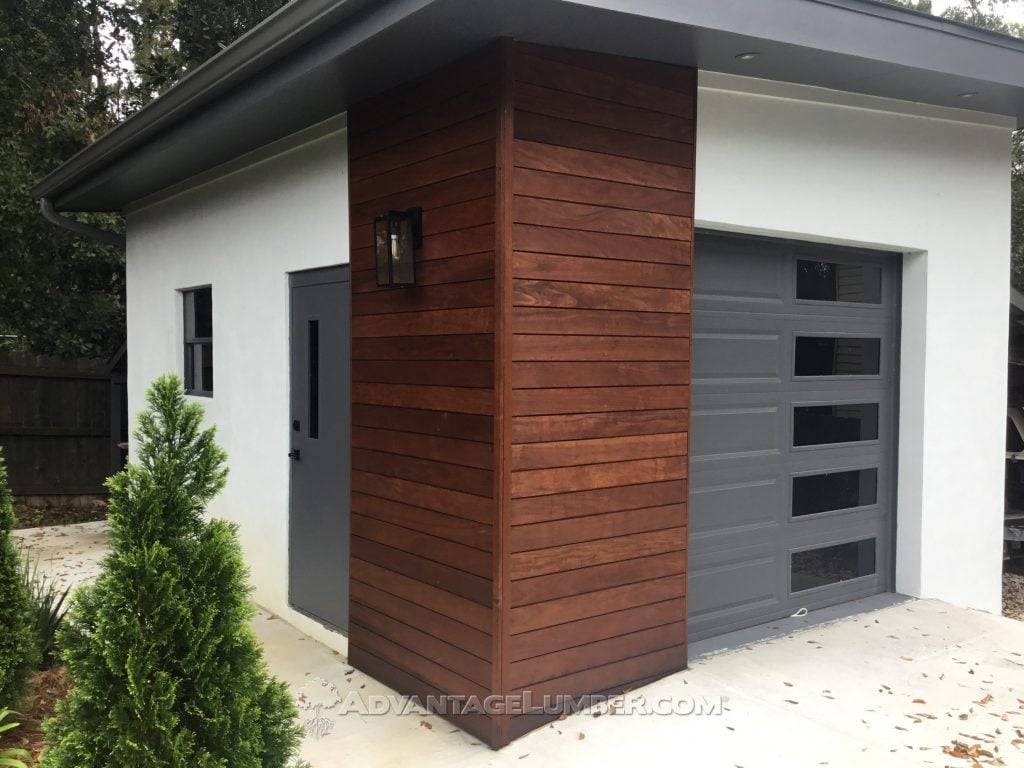In recent years, there has been a significant shift in architectural trends, particularly in the choice of materials for home exteriors. Among these, modern wood siding has emerged as a front runner, winning the hearts of homeowners and architects alike.
This blog post discusses the reasons behind this rising trend and explores the unique appeal of modern wood siding in contemporary architecture.
A Nod to Nature
The modern world is increasingly seeking connections with nature, and this is vividly reflected in architectural choices. Wood siding offers an organic, warm, and inviting look that many synthetic materials cannot match. It creates a seamless blend between the built environment and the natural surroundings, fostering a sense of tranquility and earthiness.
Versatility and Aesthetic Appeal
Modern wood siding comes in a variety of styles, from traditional planks to shingles and panels. This versatility allows for creativity in design, enabling architects to craft unique, eye-catching facades. Furthermore, wood siding can be oiled to bring out the rich colors and natural wood grains or left to turn a natural silver patina, complementing both urban and rural settings.
Sustainability and Eco-Friendliness
As environmental concerns become increasingly paramount, wood siding stands out as a sustainable option. Many modern wood siding options are sourced from responsibly managed forests, and the material itself is biodegradable, reducing the environmental footprint. Additionally, wood is a natural insulator, which can improve energy efficiency in homes.
Durability Meets Technology
Advancements in treatment and finishing techniques have significantly enhanced the durability of wood siding. Modern wood sidings are often treated to resist moisture, decay, and pests, prolonging their lifespan and reducing maintenance needs. These technological advancements make wood siding a practical choice for modern homes.
The Charm of Aging
Unlike many other materials, wood siding ages gracefully, often acquiring a patina that adds character to the building. This natural aging process can create a beautiful, lived-in look that many homeowners find appealing.
Integration with Modern Design Elements
Modern wood siding can be effortlessly combined with other materials like glass, stone, and metal, offering endless design possibilities. This integration allows for the creation of striking contrasts and contemporary aesthetics that are both bold and harmonious.
A Reflection of Personal Style
Finally, the choice of wood siding is often a reflection of personal style and a statement of individuality. Whether it’s a rustic cabin look, a sleek and smooth finish, or a patterned design, wood siding offers homeowners the opportunity to express their unique taste.
Types of Wood Siding
Wood siding is a timeless and versatile option for home exteriors, offering both aesthetic appeal and durability. Modern trends in wood siding are focusing on the use of durable hardwoods that not only provide longevity but also enhance the beauty of homes.
Let’s explore some of the best trending hardwoods siding types:
Ipe
Often referred to as Brazilian Walnut, Ipe is renowned for its incredible hardness and resistance to rot, decay, and insect infestation. Its rich, dark brown color, which can age to a silver-gray if left untreated, makes it a popular choice for contemporary designs.

Cumaru
Also known as Brazilian Teak, Cumaru features a beautiful blend of reddish-brown tones. It’s nearly as durable as Ipe and is highly resistant to weather and insects, making it a great option for siding.

Garapa
This wood species, also originating from Brazil, is known for its golden to honey-brown color, which weathers gracefully over time. Garapa is a durable, scratch-resistant wood, making it suitable for homes in harsher climates.

Teak
Teak is a classic choice, famous for its use in luxury yacht building due to its exceptional moisture resistance. Its golden brown color and ability to withstand the elements make it a premium choice for high-end siding projects.

Mahogany
Known for its reddish-brown color, Mahogany is a classic choice that offers both beauty and durability. It’s less prone to warping and shrinking, making it stable for siding applications.

Tigerwood
This wood is named for its striking appearance, featuring bold stripes that resemble a tiger’s coat. Tigerwood is not only visually stunning but also robust and resilient, perfect for a distinctive and durable siding.

Brazilian Redwood
This species offers a unique combination of reddish-brown hues and impressive durability. It’s resistant to rot and decay, making it a reliable choice for long-lasting siding.

Thermally Modified Ash
This is a unique option where the ash wood is treated through a thermal modification process, enhancing its durability and stability. The process also gives the wood a rich, dark color, making it an attractive option for modern siding designs.

Each of these hardwoods brings its own unique qualities to the table, allowing homeowners to choose a siding material that not only meets their aesthetic preferences but also provides the longevity and resilience needed for their homes. With the right care and maintenance, these hardwoods can ensure that a home’s exterior remains beautiful and durable for many years.
Conclusion
The rising trend of modern wood siding is a testament to the material’s timeless appeal and adaptability to contemporary design needs. It offers a perfect blend of aesthetics, functionality, and sustainability, making it a favored choice in the evolving world of architecture. As we continue to move towards eco-friendly and visually appealing building materials, wood siding stands out as a choice that satisfies both, bridging the gap between tradition and modern innovation.
